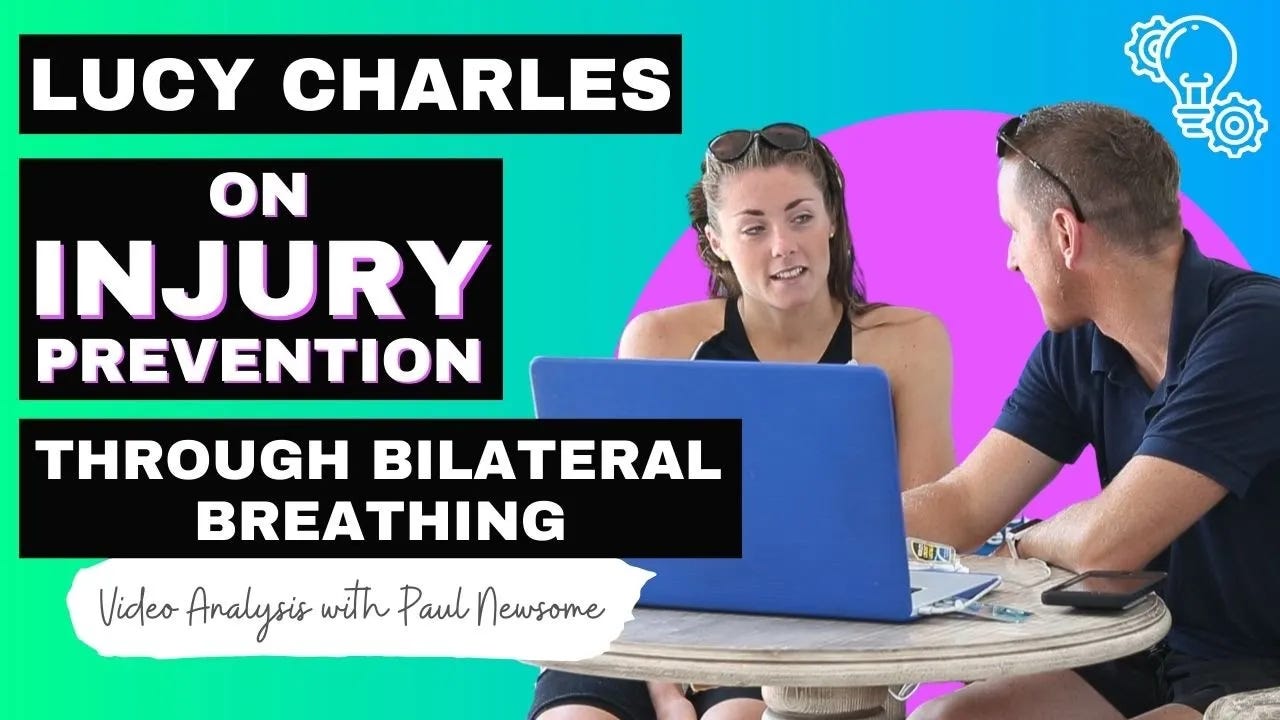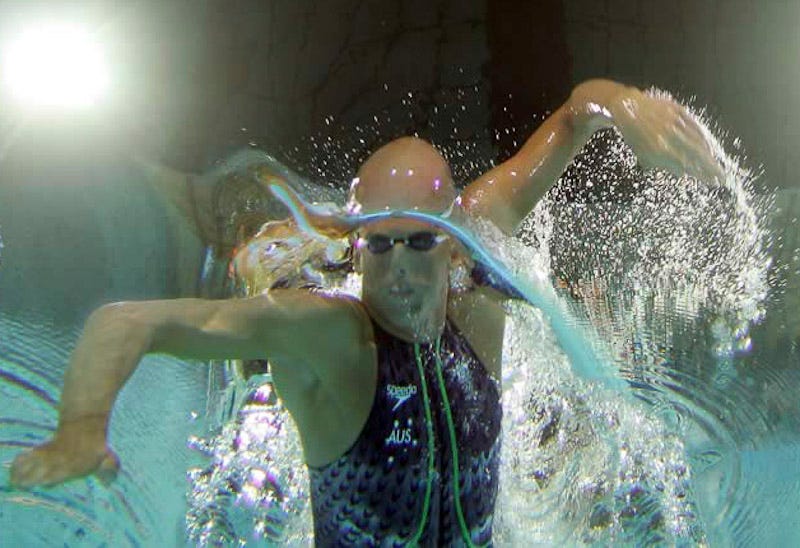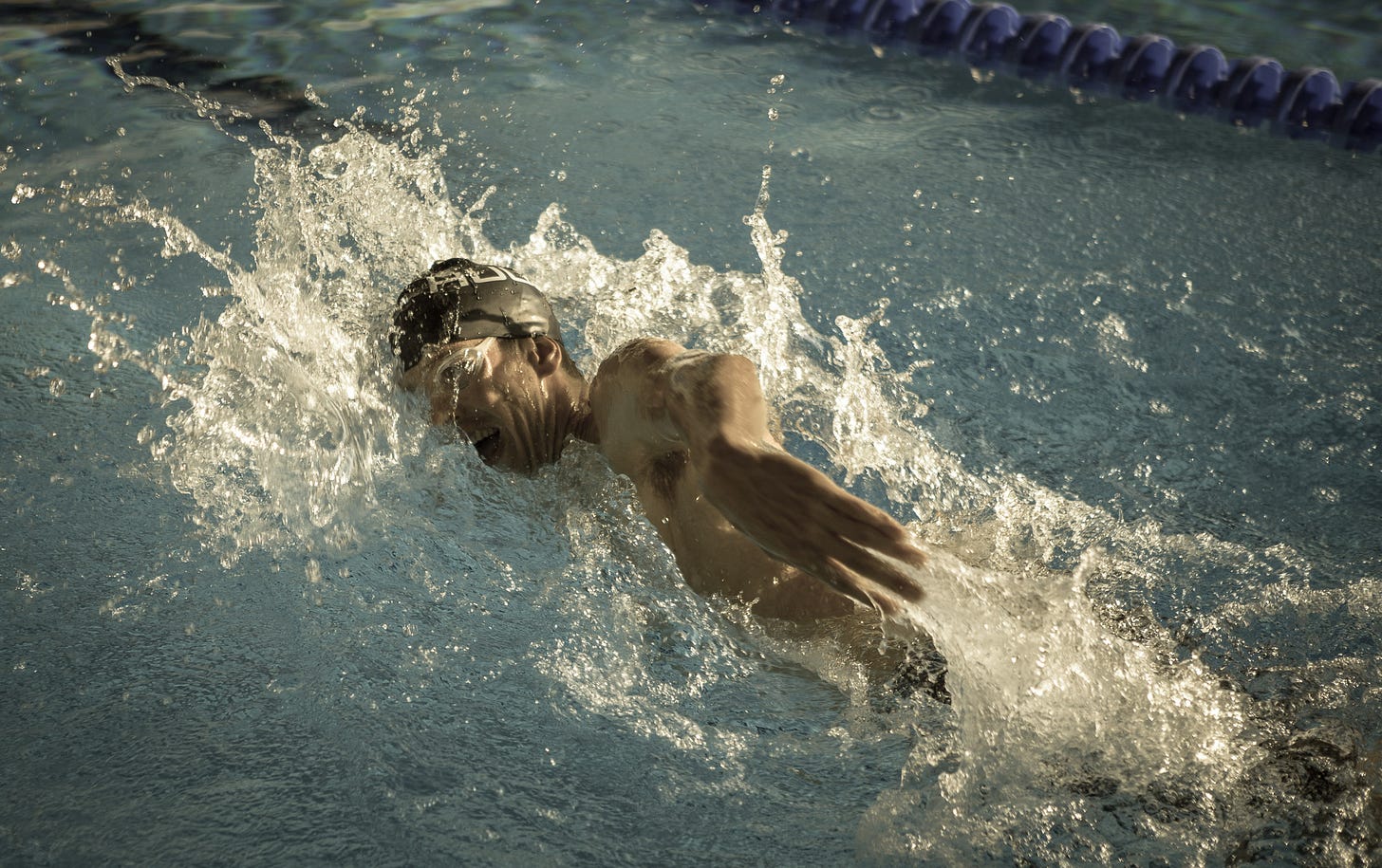Still Breathing to One Side? Here’s What That’s Really Doing to Your Stroke
The 4 Common Barriers to Bilateral Breathing - and How to Overcome Them!
Hey Swimmers,
If you've ever been told to "breathe bilaterally" but found yourself frustrated, breathless, or downright confused—you're not alone.
Bilateral breathing is one of the most misunderstood yet valuable skills in freestyle. It improves stroke symmetry, helps you swim straighter, and unlocks open water race tactics that simply aren’t possible if you can only breathe to one side.
And if you don’t believe us, watch this:
But bilateral breathing isn’t about rigidly following a 3-stroke pattern. It’s about developing the ability to breathe comfortably to either side, when the conditions or strategy demand it. And with the right understanding, anyone can learn to do it.
Why It Matters—In the Pool and Beyond
Unilateral breathing (to one side only) can work—after all, legends like Grant Hackett made it to the top with it. But it also comes with hidden risks:
A lopsided stroke that throws off alignment
Increased shoulder and lower back strain
Difficulty drafting or adapting to choppy water
Limited tactical awareness in races
Even elite swimmers who only breathe one way often pay the price—Hackett’s infamous fade in the 2007 World Championships was partly blamed on his inability to see his competition coming up on the other side.
Bilateral breathing gives you options. That means performance, comfort, and safety—especially in the open water.
How to Know if You’re Struggling
Here’s a quick test set you can try:
🏊♂️ 5 x 100m @ CSS pace – breathing only RIGHT
🏊♂️ 5 x 100m @ CSS pace – breathing only LEFT
🏊♂️ 5 x 100m @ CSS pace – breathing BILATERALLY
Is your pace slower on your non-preferred side? Is bilateral breathing harder to maintain? If you're more than 4–5 seconds slower per 100m when breathing left instead of right, that imbalance is costing you—especially in open water where swimming straight is vital.
The 4 Common Barriers—and How to Overcome Them
Many swimmers struggle with bilateral breathing for a reason. Here are the four most common culprits and how to fix them:
1. Flawed Exhalation
Breathing every three strokes won’t work if you’re still holding your breath underwater. Proper bilateral breathing relies on full, relaxed exhalation between breaths—like a sigh, not a gasp.
🔗 Learn more: swimsmooth.com/exhalation
2. Faulty Rotation
If you only breathe to one side, chances are your rotation to the opposite side is limited. This leads to awkward, late breaths and poor body position.
Focus on rotating your whole body—not just turning your head. Think about posture and balance, especially on your non-preferred side.
🔗 Learn more: swimsmooth.com/rotation
3. Poor Timing
Late breathing creates a rushed, narrow window for air—and more panic. Fixing your timing means turning your head as your opposite hand passes forwards past your head, not once you’ve reached full extension.
Try the Unco drill to isolate and improve this.
🔗 Learn more: swimsmooth.com/unco-drill
4. Lack of Stroke Rhythm
A slow, over-glided stroke means fewer breathing opportunities. That’s fine for elite sprinters taking 75 strokes per minute—but if you're cruising at 30spm and breathing every 3, you're only getting 10 breaths per minute. No wonder you feel starved of air.
Don’t fear a slightly higher stroke rate if it gives you rhythm, control, and enough oxygen to stay aerobic.
🔗 Learn more: swimsmooth.com/strokerate
Summary: Learn to Breathe Both Ways—Even If You Don’t Always Use It
You don’t have to breathe every 3, 5, or 7 strokes all the time. What you do need is the ability to breathe equally well to both sides—so you can adapt when the conditions call for it.
Whether you’re trying to stay close to your paddler in the swell, draft efficiently off a faster swimmer, or reduce shoulder strain from overloading one side—bilateral breathing gives you control.
Next week, we’ll take this one step further with a deep dive into how to train for your first 10km swim—blending distance, pacing, and mental endurance into a training plan that actually works.
Until then, thanks for reading!
Your Coach, Paul.
Keep reading with a 7-day free trial
Subscribe to Weekly Blog by Swim Smooth to keep reading this post and get 7 days of free access to the full post archives.







